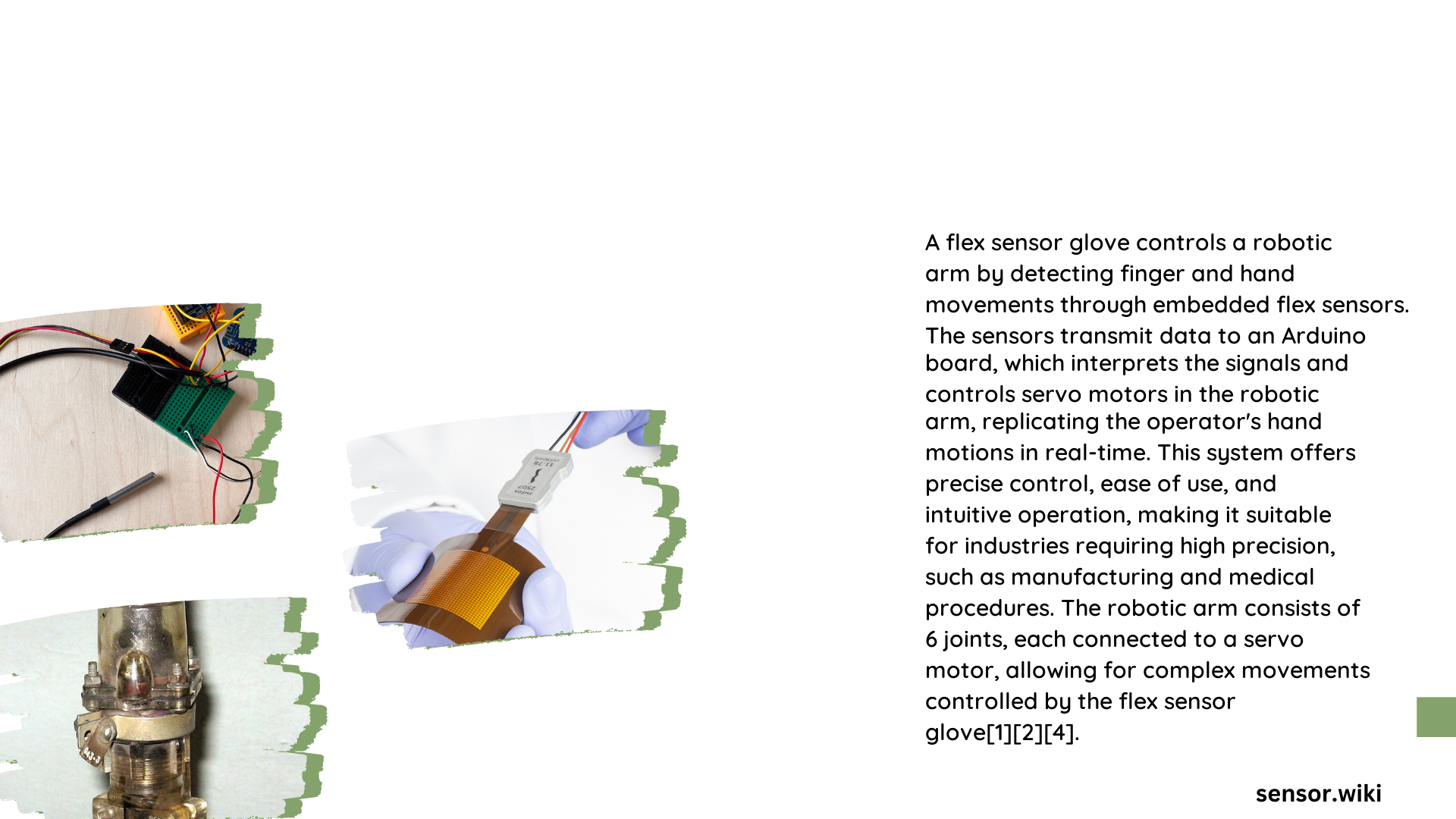Flex sensor gloves and robotic arms are revolutionizing human-machine interaction by enabling intuitive control of robotic systems. These innovative devices combine flexible sensors embedded in gloves with sophisticated robotic arms, allowing users to manipulate objects remotely with precision and ease. This technology has applications in various fields, including medicine, manufacturing, and virtual reality.
What is a Flex Sensor Glove and How Does it Work?
A flex sensor glove is a wearable device that uses flexible sensors to detect hand movements and gestures. These sensors, typically made from piezoresistive materials like Velostat, change their electrical resistance when bent or flexed. The glove translates these resistance changes into digital signals, which can then be used to control various devices, including robotic arms.
Key Components of a Flex Sensor Glove:
- Flex sensors (3-5, one for each finger)
- Conductive sewing thread
- Microcontroller (e.g., Arduino)
- Glove material (flexible and comfortable)
- Adhesives and fasteners
How are Flex Sensors Placed on the Glove?
Flex sensors are strategically placed along the length of each finger, covering the areas where bending occurs. The typical dimensions of a flex sensor strip are approximately 0.7cm x 8cm, though this can vary based on finger length and glove size. Additional sensors may be placed on the wrist or elbow for more complex movement detection.
To ensure accurate readings, the sensors are kept taut using elastic attachments. Some designs incorporate loops or guides stitched around the sensors to maintain their position during hand movements.
What are the Design Specifications for a Robotic Arm?

A robotic arm is a mechanical device designed to mimic the functions of a human arm. When paired with a flex sensor glove, it can replicate the user’s hand movements with high precision.
Key Components of a Robotic Arm:
- Servomotors or stepper motors
- Structural components (often 3D printed)
- Microcontroller for processing signals
- Power supply
- End effector (gripper or tool)
How is the Robotic Arm Controlled by the Flex Sensor Glove?
The control interface between the flex sensor glove and the robotic arm is crucial for accurate and responsive operation. Here’s how it typically works:
- The flex sensors in the glove detect hand movements.
- These movements are translated into electrical signals.
- A microcontroller processes these signals and converts them into commands.
- The commands are sent to the robotic arm’s motors, replicating the hand’s movements.
What are the Communication Protocols Used?
Two main communication protocols are used:
- Wired Communication: Offers more reliable real-time feedback but limits mobility.
- Wireless Communication: Provides greater freedom of movement but may introduce latency.
For wireless setups, Bluetooth modules like HC-05 are commonly used. However, careful pairing and baud rate adjustments are necessary to ensure reliable communication.
How is the Flex Sensor Glove Calibrated?
Proper calibration is essential for accurate control of the robotic arm. The calibration process involves:
- Measuring the resistance changes of each flex sensor at different bending angles.
- Mapping these resistance values to specific angles (usually 0 to 180 degrees).
- Implementing this calibration data in the control software.
Tools Required for Calibration:
- Multimeter
- Microcontroller with Analog-to-Digital Converter (ADC)
- Calibration software
With proper calibration, the system can achieve smooth and precise movements, accurately detecting the natural movement of the human hand.
What are the Cost Factors in Developing a Flex Sensor Glove and Robotic Arm System?
The cost of developing a flex sensor glove and robotic arm system can vary widely depending on the quality of components and the complexity of the design. Here’s a breakdown of potential costs:
| Component | Estimated Cost Range |
|---|---|
| Flex Sensors | $5 – $20 each |
| Microcontroller (e.g., Arduino) | $20 – $50 |
| Servomotors | $5 – $10 each |
| 3D Printing Materials | $10 – $50 per kg |
| Miscellaneous (thread, glove, etc.) | $20 – $50 |
Additional costs may include:
- Labor (if not a DIY project)
- Software development
- Testing and calibration equipment
Potential Funding Sources:
- Research grants from universities or institutions
- Crowdfunding platforms (e.g., Kickstarter, Patreon)
- Industrial partnerships with robotics companies
What are the Potential Applications of Flex Sensor Gloves and Robotic Arms?
The combination of flex sensor gloves and robotic arms has numerous applications across various industries:
- Medicine: Telesurgery and rehabilitation
- Manufacturing: Remote operation of machinery in hazardous environments
- Virtual Reality: Enhanced interaction in virtual environments
- Space Exploration: Control of robotic systems on other planets
- Education: Interactive learning tools for STEM subjects
As technology continues to advance, we can expect to see even more innovative applications for these versatile devices, further bridging the gap between human intent and machine action.
References:
1. ROBOTIC ARM CONTROLLED BY ROBOTIC GLOVE
2. Flex Sensor Based Robotic Arm Controller Using Micro Controller
3. Flex Sensor Glove
